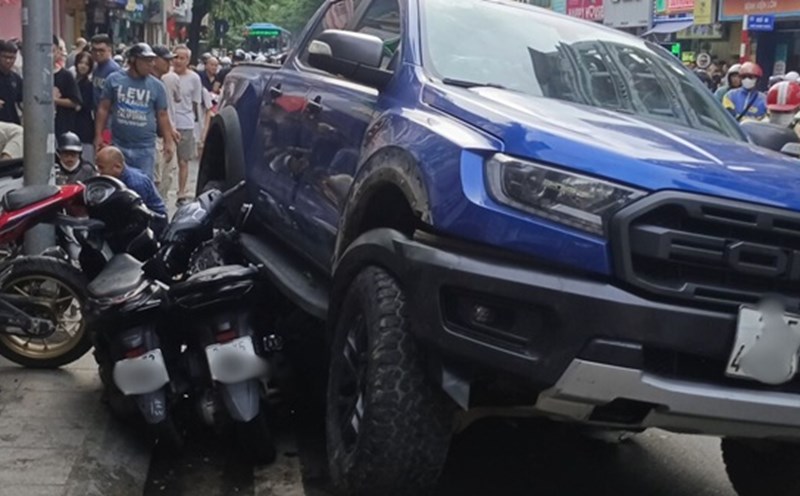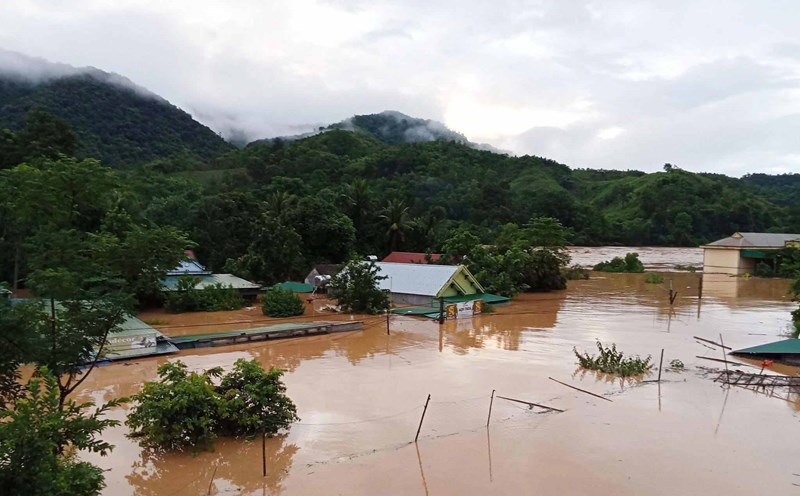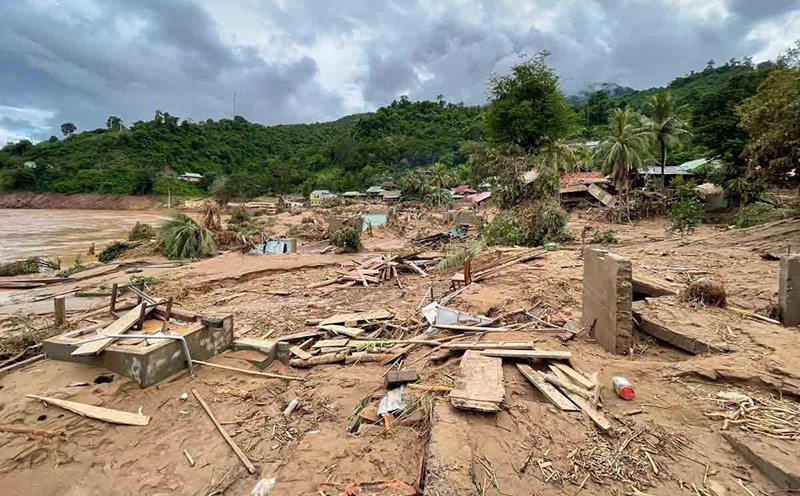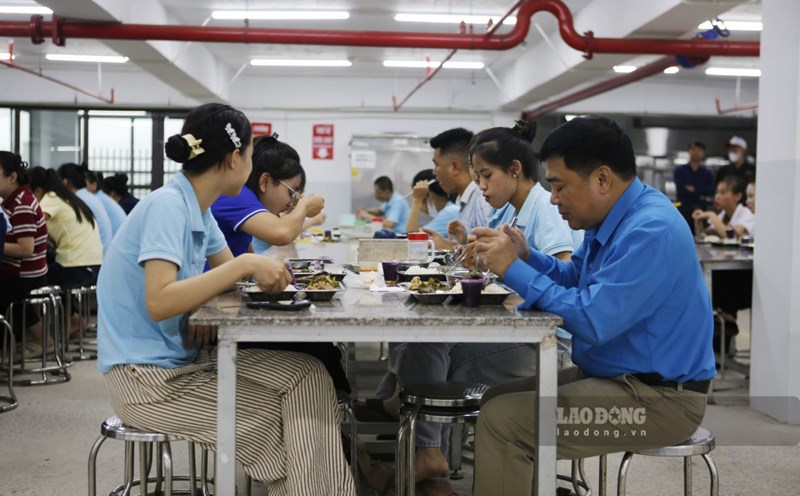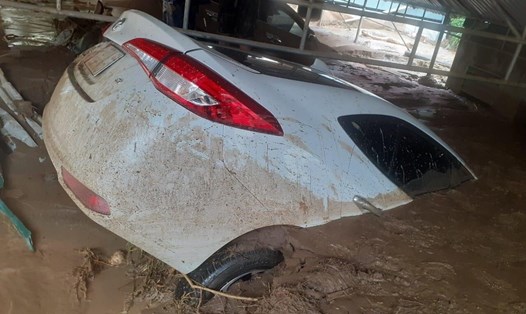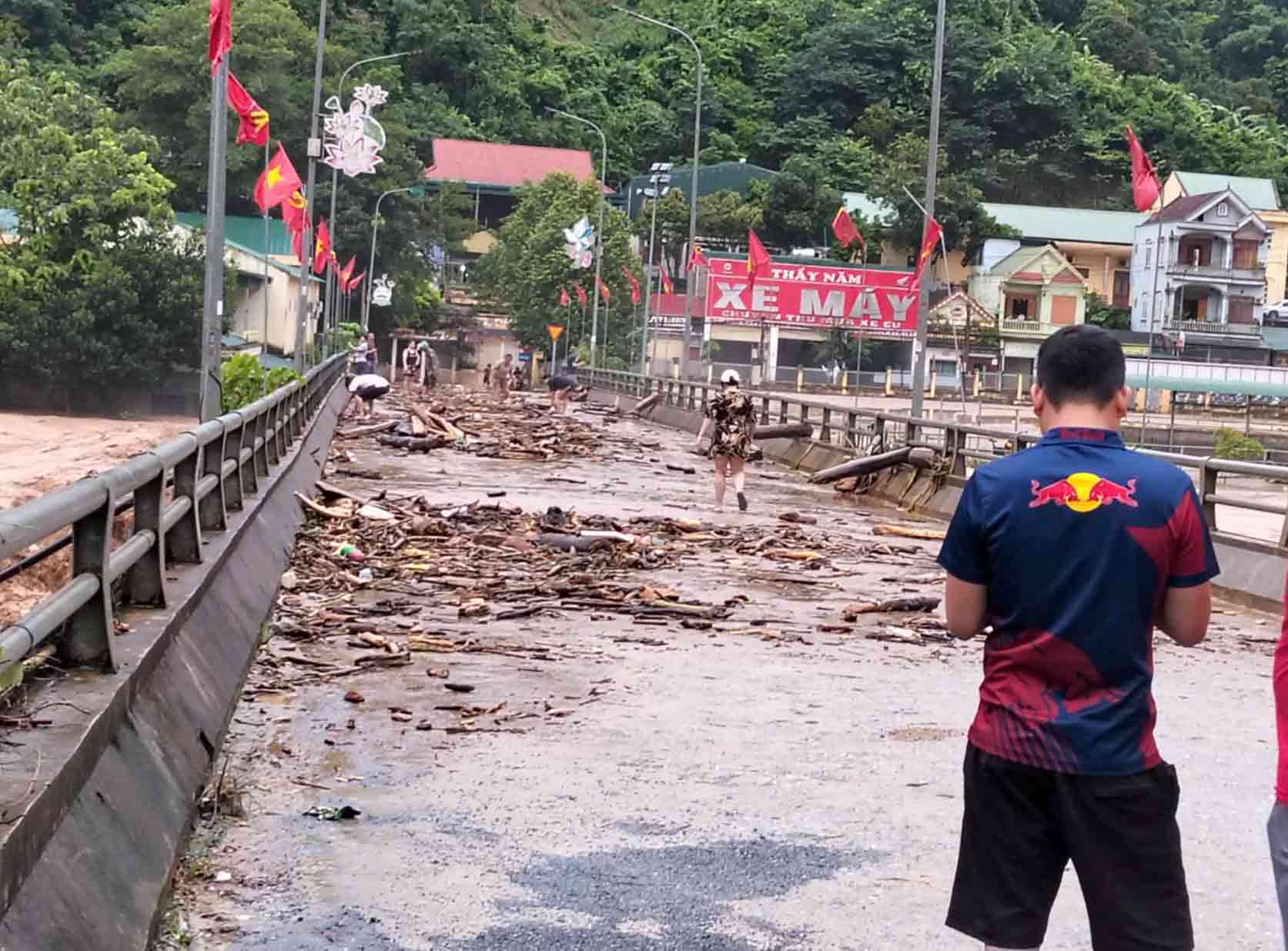
From 10:00 p.m. on July 21 to the early morning of July 23, Muong Xen commune recorded heavy rain with tornadoes, causing serious damage.
According to preliminary statistics from the Commune People's Committee, up to now, 9 villages and residential areas have been flooded from 1 to 3.5m deep, including: Nhan Cu, Ban Canh, Binh Son 1, Cau Tam and blocks from 1 to 5. Many of these villages are still completely isolated due to rising flood waters and landslides.
Faced with the complicated developments of natural disasters, the commune government quickly deployed emergency response measures. A total of 528 households were evacuated to safe places, of which 30 households were in high-risk landslide areas in Sa Vang, Na Nhu, Binh Son 1 and Binh Son 2 villages; the rest were households with houses severely flooded.
In particular, 12 houses were swept away and completely collapsed by floods, many other houses were damaged to uncounted levels due to communication being almost completely paralyzed in the area.
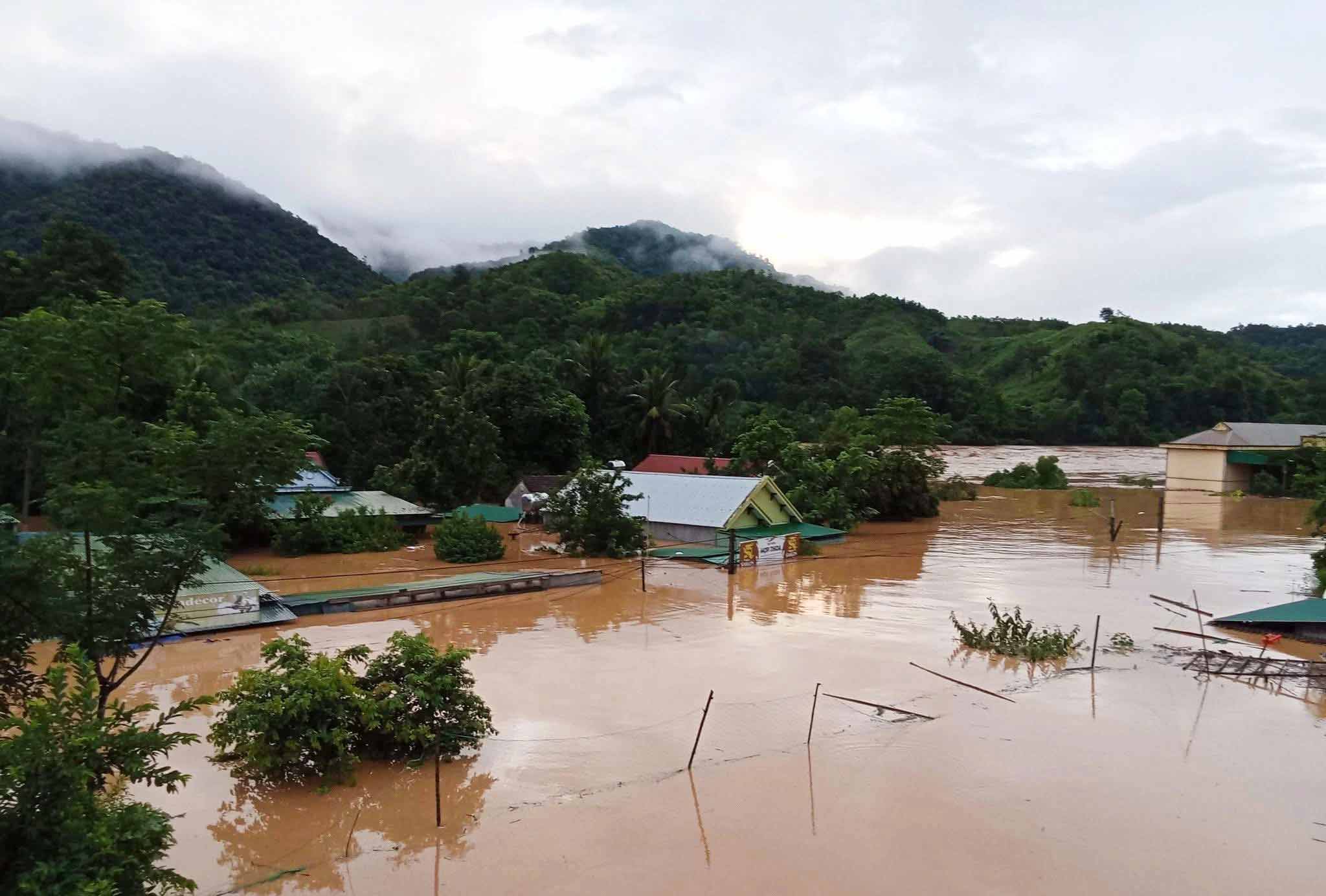
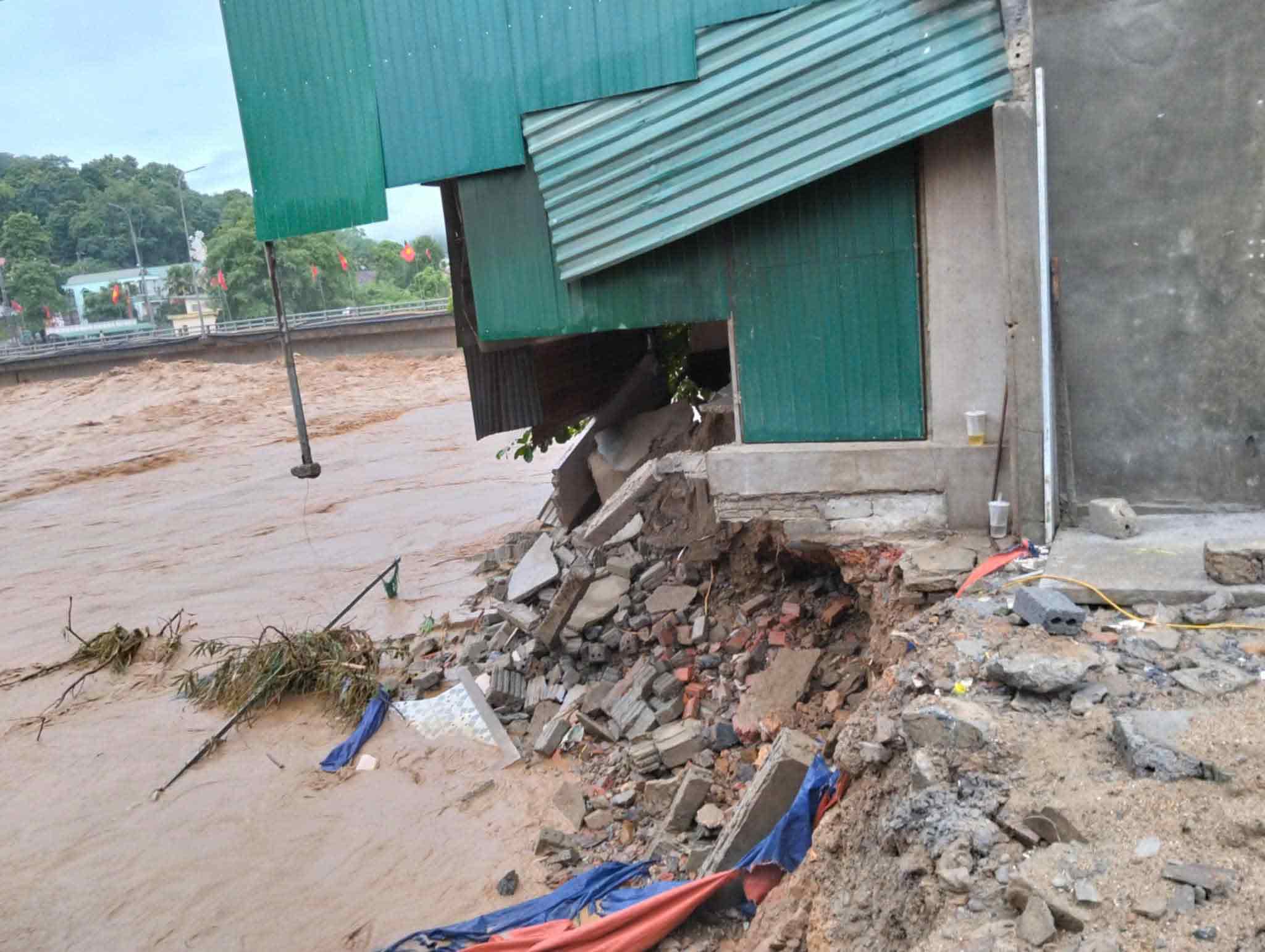
The entire power system in the commune has been cut off to ensure safety, due to widespread flooding. The communication system was also seriously disrupted, making it difficult to rescue, direct and approach isolated areas.
The two main roads, National Highway 7A and Provincial Road 543D, were heavily flooded and had many landslides. Route 543D was especially completely flooded from Nhan Cu village to Cau Tam village. Landslides on many roads such as Muong Xen - Tay Son, Ban Canh - Binh Son 2 and the road to Lu Thanh village with a total estimated volume of landslides of nearly 140m3.
The total estimated damage due to damaged traffic systems is up to about 350 million VND.
In addition to houses and infrastructure, many areas of crops and livestock of the people were also washed away, the damage cannot be accurately counted.
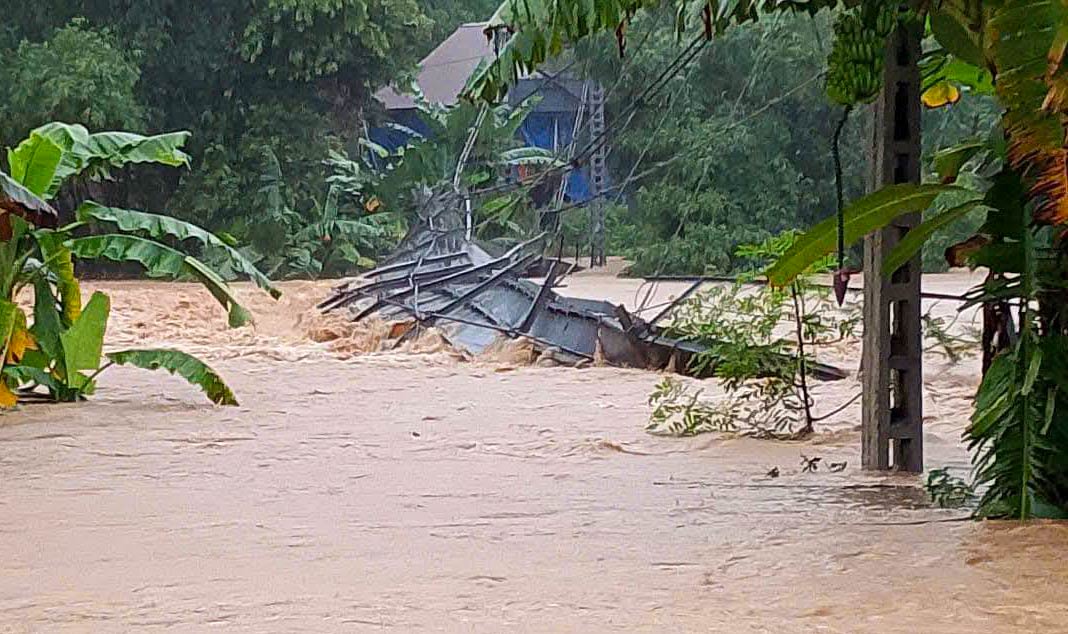
Before the natural disaster, the People's Committee of the commune issued an official dispatch directing the response to storm No. 3 and the release of floodwaters from Nam Mo hydropower plant. Shock teams are activated and assigned specific tasks to each member. During the flood, local forces were on duty 24/7, supporting people in evacuating and protecting their property.
After the natural disaster, local socio-political organizations are also urgently coordinating to count the damage, support people in cleaning up, repairing their houses, and temporarily restoring some roads that were slightly eroded.



